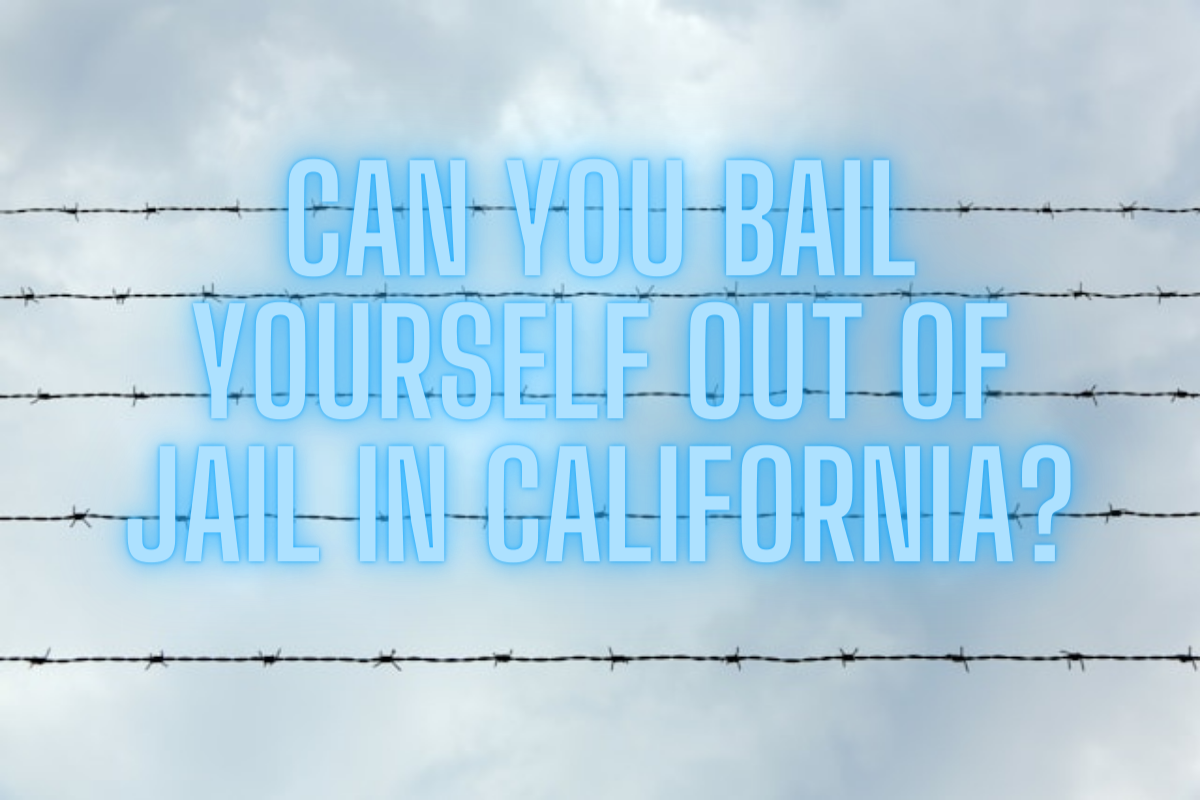BY |
Bailing yourself out of jail seems like it should be simple. You pay the court what you owe, and they arrange your release.
Unfortunately, it isn’t always as straightforward in real life. While you can bail yourself out, you may face obstacles.
Self-Bail: California's Rules
California sets bail according to the state’s Bail Schedule. This document tells judges how high they can put the bail amount, with some adjustments for the circumstances.
Unfortunately, this still means judges can request you pay enormous sums – more than most people have in their bank accounts. And that rules out self-bail for many people.
Whether you are eligible for bail will depend on the severity of the charges. If police believe you conducted a mass killing, they are unlikely to release you until the trial. By contrast, release is significantly more likely if it is a misdemeanor charge.
Self-bail is also more likely when you have links to the community. If you have family, children, a job, and an address in the region, judges will look at you more favorably. (By contrast, it is less likely if you arrived in California from out-of-state).
If judges think you might run, they won’t release you from jail. Flight risk is a real issue and one of the reasons many defendants remain in prison (including those exonerated later). Furthermore, it could also lead to bail forfeiture, which might put you in financial hot water.

With that said, even paying bail can sometimes be challenging from a jail cell. Officials sometimes deny you access to your banking applications and wallet if they suspect the funds might be stolen. In this case, you will need to ask someone else to bail you out or provide money to the court. You can’t do it yourself.
DIY Bail: A Step-by-Step Guide
Can you bail yourself out of jail in California? The broad answer is “yes,” but with some caveats. As we have seen, there are situations where self-bail isn’t an option.
But if judges do grant bail, what should you do? Here’s a step-by-step rundown of the actions you need to take:
Step 1: Get Arrested
The first step is for police to arrest you and take you to a jail cell. Bail won’t apply unless law enforcement officials incarcerate you.
Step 2: Wait For The Bail Hearing
Once in jail, the next step is to wait for the bail hearing. California law states this must occur within 48 hours of being charged (so two days).
Sometimes the circumstances of your arrest can be confusing for law enforcement officials. Therefore, California law gives them 48 hours to charge you from the point of taking you into custody. As such, it may be several days before the judge grants bail and you know how much it is.
When learning how to bail yourself out of jail, you should note the day and date. If police charge you on a Sunday and no judges are available, you may have to wait longer than 48 hours for a bail hearing. The same applies to national holidays, such as Christmas and Easter. Waits as long as 72 hours after being charged are possible.
Judges can’t propose bail before police charge you because they don’t know the circumstances of your arrest. Officials can only set bail once they understand the severity of the alleged crimes.
Step 3: Arrange Payment
The next step for bailing yourself out of jail requires arranging payment (provided the judge granted bail).
You have several ways you can do this:
- Paying bail yourself by ordering cash from your bank while in jail
- Getting a friend or family member to bail you out of jail
- Using a bail agent to pay the bail
Which you choose is entirely up to you. With bail, you get the money back if you attend all your court dates. Getting a bond from a bail agent requires you to pay a non-refundable fee to pay your bail on your behalf.
During this process, you will need to complete various items of paperwork. These will differ depending on which option you choose. If you use a bail agent, they can guide you through the administration and help you get out of jail faster.
Step 4: Secure Release
Once the money is with the court and the paperwork is complete, law enforcement officials will release you from jail. From that point, you are free to return home or work. However, you must observe the bail conditions. These can include:
- Attending court dates on time
- Remaining within the state of California
- Remaining within your home except for essential appointments and appearances
- Wearing a tracking tag on your ankle
- Staying away from particular areas
- Refraining from committing any crime
Police will usually release you from jail within 30 minutes to 12 hours of receiving payment. Using a bail agent is often the fastest option.
Step 5: Receive The Bail
The last step is to receive the bail money back if you paid yourself (or release the bond if you used a bail agent). This process occurs when you fulfill your bail conditions and complete your trial.
Posting Your Own Bail: What You Should Know
If you decide to post your own bail, you should know:
- The amount you have to pay – it can be a significant sum
- The payment methods police will permit – sometimes you have to pay in cash
- The time it takes – bail doesn’t always occur immediately, particularly if the courts and police attendants are busy
Can You Use a Bondsman to Bail Yourself Out?
As discussed, you can use a bond agent to bail you out of jail. Future Bail Bonds are here to bail you out 24/7, meaning you can call us anytime for assistance. If you’d like to bail yourself out of jail, contact our team. We’d love to help you.

